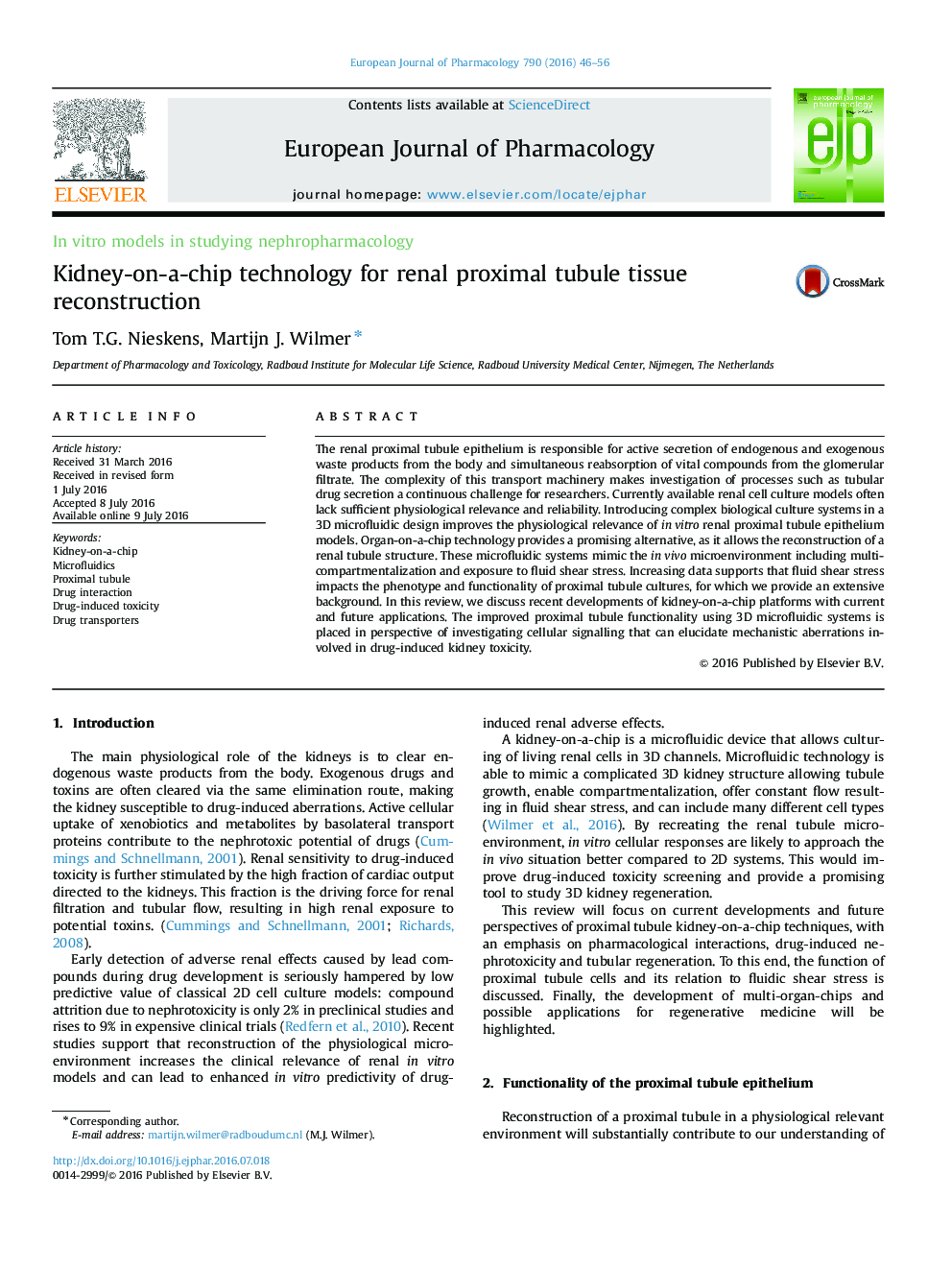| Article ID | Journal | Published Year | Pages | File Type |
|---|---|---|---|---|
| 5554810 | European Journal of Pharmacology | 2016 | 11 Pages |
The renal proximal tubule epithelium is responsible for active secretion of endogenous and exogenous waste products from the body and simultaneous reabsorption of vital compounds from the glomerular filtrate. The complexity of this transport machinery makes investigation of processes such as tubular drug secretion a continuous challenge for researchers. Currently available renal cell culture models often lack sufficient physiological relevance and reliability. Introducing complex biological culture systems in a 3D microfluidic design improves the physiological relevance of in vitro renal proximal tubule epithelium models. Organ-on-a-chip technology provides a promising alternative, as it allows the reconstruction of a renal tubule structure. These microfluidic systems mimic the in vivo microenvironment including multi-compartmentalization and exposure to fluid shear stress. Increasing data supports that fluid shear stress impacts the phenotype and functionality of proximal tubule cultures, for which we provide an extensive background. In this review, we discuss recent developments of kidney-on-a-chip platforms with current and future applications. The improved proximal tubule functionality using 3D microfluidic systems is placed in perspective of investigating cellular signalling that can elucidate mechanistic aberrations involved in drug-induced kidney toxicity.
